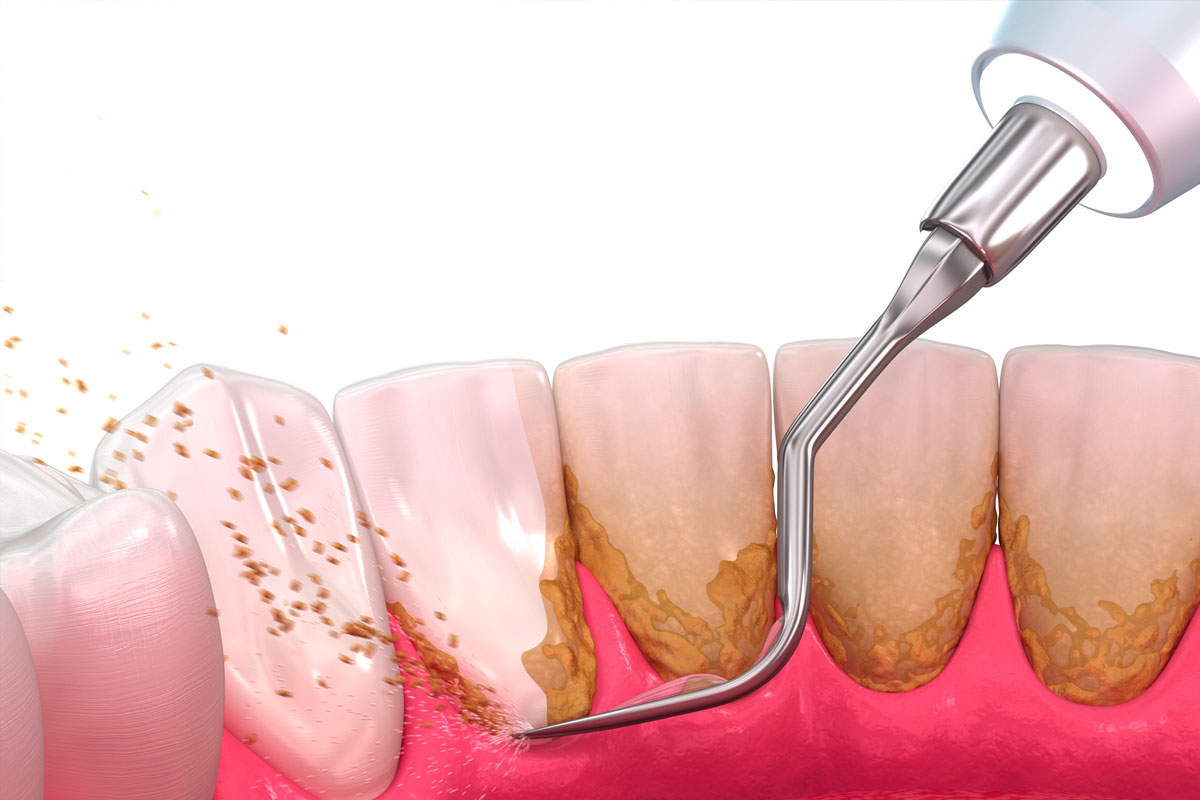When it comes to oral hygiene, regular brushing and flossing may not be enough to maintain healthy gums and teeth. Deep cleaning procedures like root planing can be a game-changer in maintaining optimal oral health.
What is Root Planing?
Root planing, also known as deep scaling, is a non-surgical dental procedure that targets the removal of plaque, tartar, and bacteria from the tooth root surfaces, particularly in the area below the gumline. The process begins with a comprehensive oral health evaluation to determine the need for root planing. If necessary, local anesthesia is administered for patient comfort. Specialized tools, such as ultrasonic scalers and curettes, are then used to meticulously clean and smooth the root surfaces, promoting gum reattachment and preventing further issues. This procedure ensures a thorough cleaning of all areas below the gumline.
Signs That You May Need Root Planing
Root planing is typically recommended for individuals displaying signs of gum disease, also referred to as periodontal disease. These signs may encompass:
- Bleeding Gums: If your gums bleed when brushing or flossing, it may indicate gum disease due to bacterial inflammation beneath the gumline.
- Bad Breath: Persistent bad breath, despite regular oral care, can signal underlying gum disease, as bacteria in gum pockets release odorous compounds.
- Gum Recession: Receding gums expose tooth roots, increasing susceptibility to decay and sensitivity. Root planing addresses the root cause and prevents further recession.
- Deep Gum Pockets: During a dental check-up, gum pocket depth is assessed. Depths exceeding 4 millimeters suggest gum disease. Root planing reduces pocket depth, enhancing gum attachment.
- Loose Teeth: Gum disease weakens tooth-supporting structures, causing tooth mobility. Root planing helps stabilize teeth by improving overall gum health.
If you observe any of these signs, consult a dental professional promptly for a thorough evaluation. Early detection and intervention can halt gum disease progression and reduce the need for more invasive treatments.
The Benefits of Root Planing
Root planing offers a range of advantages that significantly enhance overall oral health. These key benefits include:
- Preventing Gum Disease: By eliminating bacteria, plaque, and tartar from root surfaces, root planing helps prevent the onset and progression of gum disease, averting discomfort and potential tooth loss in advanced stages.
- Reducing Gum Pocket Depth: Gum disease often leads to deep gum pockets, ideal for bacterial growth. Root planing eliminates bacteria and reduces pocket depth, promoting healthier gums.
- Eliminating Bad Breath: Bacteria in deep gum pockets can cause persistent bad breath. Root planing removes these bacteria, addressing the root cause of bad breath and restoring freshness.
- Promoting Gum Reattachment: Smooth root surfaces achieved through root planing encourage gum reattachment to teeth, preventing new pocket formation and reducing the risk of future gum disease.
- Enhancing Overall Oral Health: Root planing not only benefits gums but also contributes to overall oral health by preventing tooth decay, gum infections, and other oral complications.
Root Planing Procedure
The root planing process involves several key steps:
- Initial Assessment: Before commencing the procedure, a dental professional conducts a comprehensive assessment of your oral health. This assessment includes an in-depth evaluation of your gum condition, measurement of gum pocket depths, and a review of your dental history and X-rays.
- Patient Explanation: The dental professional provides you with a clear explanation of the root planing procedure, addressing any questions or concerns you may have. You’ll also receive instructions for post-treatment care.
- Anaesthesia: To ensure a comfortable and painless experience, the dental professional administers local anaesthesia to numb the treatment area.
- Plaque and Tartar Removal: After the anaesthesia takes effect, specialized tools such as ultrasonic scalers and manual curettes are used to access the root surfaces of your teeth. These tools effectively eliminate plaque, tartar, and bacteria from below the gumline. The process involves a meticulous cleaning of each tooth, with close attention to gum pocket depths and areas of concern.
- Completion: The number of visits required to complete the root planing procedure depends on the severity of gum disease and the extent of treatment needed. The dental professional determines the number of visits based on your individual needs.
- Aftercare Instructions: Following root planing, it’s essential to adhere to the aftercare instructions provided by the dental professional. This may involve using prescribed mouthwash, avoiding specific foods and drinks, and maintaining excellent oral hygiene practices.
Root planing’s primary objectives are to eliminate the bacteria and irritants responsible for gum disease, reduce gum pocket depths, promote gum reattachment, and prevent further complications. It plays a critical role in sustaining optimal oral health, particularly for individuals displaying signs of gum disease, such as bleeding gums, persistent bad breath, gum recession, deep gum pockets, or loose teeth. Regular communication with your dental professional and compliance with aftercare instructions are essential for the success of root planing treatment.
Is Root Planing Painful?
Many patients worry about potential pain during root planing, but local anaesthesia effectively minimizes discomfort during the procedure. It numbs the treatment area, ensuring a painless experience, with the option for additional anaesthesia if necessary. After the procedure, some temporary tenderness or sensitivity may occur, usually resolving within days. Over-the-counter pain relievers and warm saltwater rinses can help. Root planing is a vital dental procedure that prevents and treats gum disease, promoting overall oral health. Consult a dental professional if you experience gum disease symptoms, as root planing may be recommended to ensure a healthy smile and well-being.
Richmond Dental Centre Accepting New Patients
Are you looking for a local dentist in the city of Richmond? The Dental Professionals at Richmond Dental Centre welcomes walk-ins, emergencies & new patients! Give us a call at (604) 273-3368 to schedule a dental appointment.







